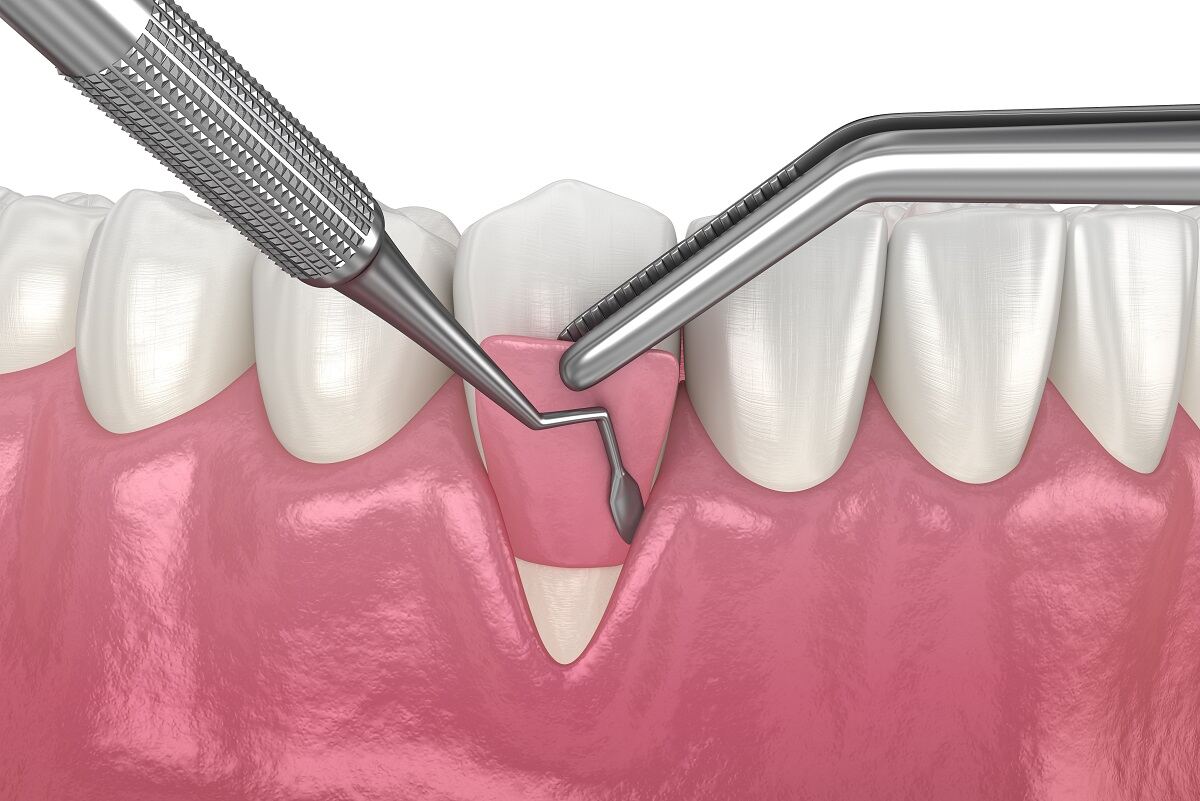Anyone can experience the discomfort of gum recession, but not everyone is a good candidate for gum grafting. Surgery called gum grafting can reverse the effects of gum recession and restore your gums’ health and appearance.
To learn more, reach out to your local dentist today.
What is Gum Recession?
Gum recession happens when the gum tissue that normally protects the teeth recedes, revealing more of the tooth or the tooth’s foundation. Tooth sensitivity, an increased risk of cavities, and an unpleasant smile are just some of the dental problems that might result. Prompt treatment from a periodontist in Los Angeles of gum recession is necessary to avoid further issues.
Common Causes of Gum Recession
- Poor Oral Hygiene: If you don’t brush and floss properly, plaque and tartar can build up, creating irritation and inflammation in your gums, which can lead to recession if left untreated.
- Gum Disease (Periodontitis): Gum recession occurs when the supporting tissues of the teeth have been damaged by advanced gum disease.
- Genetics: Some people have genetically thinner gum tissues, which makes them more prone to recession.
- Bruxism (Teeth Grinding): Excessive pressure from teeth grinding or clenching might eventually cause gum recession.
- Tobacco Use: Some people have genetically thinner gum tissues, which makes them more prone to recession.
- Orthodontic Treatment: Due to the repositioning of teeth, gum recession can occur in some patients undergoing orthodontic treatment with braces.
Understanding Gum Grafting
When gum tissue recedes, a dentist may recommend gum grafting, which is also known as periodontal plastic surgery or gingival grafting. When the gums recede from the teeth, exposing more of the tooth’s root surface, this is called gum recession. Tooth sensitivity, an increased risk of cavities, and an unattractive appearance of the gums and teeth are just some of the dental issues that can result from this condition.
Gum grafting can improve gum health and the appearance of teeth by concealing unsightly tooth roots and repositioning the gum line.
An Overview of How Gum Grafting Works
Evaluation
Your dentist or periodontist near you will examine your mouth and gums beforehand to determine if gum grafting is necessary and appropriate for your situation.
Anesthesia
In order to keep you relaxed and pain-free during the transplant operation, a local anesthetic will be used to numb the area.
Graft Selection
The severity of the recession, the underlying cause of recession, and the patient’s preferences all play a role in determining which gum graft to use. Some common grafts are:
Connective Tissue Graft: This type of gum transplant is the most common. It involves taking a small piece of tissue from the roof of your mouth (palate) and attaching it to the area with gum recession.
Free Gingival Graft: Similar to a connective tissue graft, only the tissue for the graft comes directly from the gums around the receding gum line rather than the palate.
Pedicle Graft: The exposed root is covered by a flap of gum tissue that has been partially removed from the neighboring area and then stretched or rotated into place. When there is sufficient gum tissue close by, this graft type can be employed.
Graft Placement: After the exposed root surface has been covered with the selected graft tissue, it is carefully positioned and sutured (stitched) into place. Gum tissue regeneration is assisted by the graft tissue’s protective barrier function.
Healing
After a few weeks or months, the transplanted tissue should fuse with your natural gums, resulting in complete protection for your tooth roots. After gum grafting in Los Angeles, it’s essential to take care of yourself and practice proper dental hygiene so that you recover quickly.
Identifying Candidates for Gum Grafting
While many people experience gum recession, not all of them require gum grafting surgery. Several considerations must be taken into account in order to select the most suitable patients for the procedure.
- Extent of Gum Recession: Gum grafting is most effective on patients who have experienced significant gum recession, leaving a significant amount of the root surface exposed.
- Tooth Sensitivity: People whose teeth have become more sensitive as due to gum recession may find relief from the condition by having grafts placed on the exposed root surfaces.
- Cosmetic Concerns: Gum grafting is an option for patients who are unhappy with the appearance of their smile due to gum recession.
- Ongoing Gum Disease: Gum grafting is an option for people with persistent gum disease since it helps restore gum health and assists in stabilizing the gum line.
- Oral Health Habits: The success of the transplant depends on the patient’s commitment to good oral hygiene after the procedure.
- Tobacco Use: Tobacco use can slow the healing process after gum grafting, thus patients who use tobacco should be advised to stop or reduce their consumption before surgery.
- Overall Health: Candidates should be in good overall condition, as pre-existing diseases may affect the outcome of the treatment and the recovery time.
Benefits of Gum Grafting
- Improved aesthetics
- Reduced tooth sensitivity
- Protection from further recession
- Prevention of tooth decay
If you have gum recession or are self-conscious about the condition of your gums and teeth, a visit to the dentist or periodontist is necessary. They will be able to assess your situation and advise you on whether gum grafting near you is the best course of action.
Seek the Expertise at Nima Ebrahimi DDS
Discover exceptional dental health with our staff here at our local dental practice. We are dedicated to the advancing techniques to ensure you’ll get the best care possible, tailored specifically to your needs. Schedule an appointment today to take the first step toward a healthier smile.
